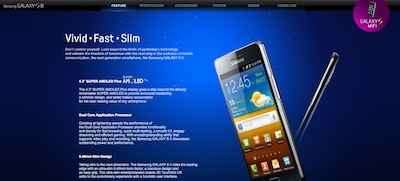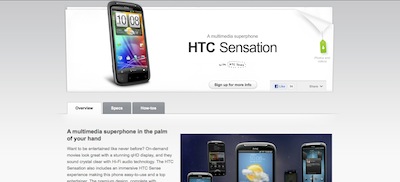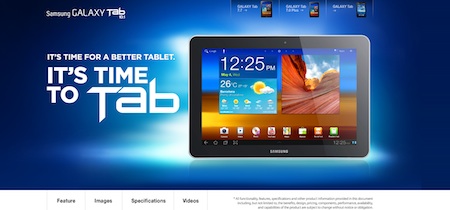
It is a situation whose irony is difficult to miss. The success of most operating systems depends on device manufacturers adopting them and supporting them. Almost every major phone and tablet manufacturer today has taken Android to heart. And Android is paying the price.
On the surface that seems a ridiculous statement. Check the stats, the pundits will scream. Android today is the world’s most popular mobile operating system, thanks to the fact that so many manufacturers have adopted it and are pushing it for all they are worth. Motorola staged a comeback with it, Samsung shook up Nokia’s smartphone supremacy using it, HTC and LG are adopting it for their high end devices, BlackBerry is trying to find ways to get Android apps running on its PlayBook, and Sony Ericsson has publicly staked its future on it.
Even relatively smaller players like Micromax, Olive and Karbonn are coming out with Android powered devices. It is these manufacturers who have given Android its market share in the smartphone market. How can they then, be Android’s biggest problem?
Processors, cores…Android?
To get an idea of where we are coming from, we would request you to check the homepage of Samsung’s flagship device, the Galaxy SII, which many consider to be the best smartphone in the world. That done, do also head over to the homepage of the HTC Sensation, another muscled Android. You will notice many things on both pages – Android will not be one of them! In fact, even if you click on the “Go to feature” link on the Galaxy SII’s homepage, the first reference to Android will come well after the likes of the dual core processor, the AMOLED display and the slimness of the device have been stressed.
And this is no one off – head to the Galaxy Tab 10.1’s home page or that of the HTC Flyer and once again, the word “Android” will be conspicuous by its absence. And it is not as if these devices are running old versions of the OS – they are running the very latest versions. (Interestingly, the iPhone 4S and iPad 2 homepages have iOS mentioned at the very outset, along with significant tech specs).
Remember the PCs…and Windows?
All of which reminds us of the PC era in the early 2000s, when suddenly no one gave a damn about the operating system – it was tech specs that counted. Now, we have nothing against the innards of a device, but the stark fact is that it is the software and UI that make the most impact on the user. However, thanks to the constant bleating of device manufacturers about God know how many kinds of screens and the Devil knows how many cored processors, suddenly the OS has faded right into the background.
Of course, we know that many people will at this stage say, “So what? It is the experience that counts? And did not PCs and notebook sales take off in the early 2000s, as prices dipped and manufacturers worked out how to make the most of Windows XP?” Fair point. The problem is that in the case of PCs, users can update Windows without depending on the manufacturer.
Not so in the case of Android, unless you are using one of the Nexus phones. What’s more, PC Windows versions tend to remain static over a period of time, with a few bug-fixing service packs thrown in. Not so Android, which rolls out a few new versions ever year. Put those two points together, and you can see why we are calling device manufacturers Android’s biggest headache.
Forget the software, buy the specs!
For, the stark fact is, that many tablet and cellphone manufacturers are trying to sell users tech specs, not an OS. The OS is being pushed to the background. Head to an electronics store in Delhi and you will see smartphone and tab customers asking about “dual core processors”, “RAM” and “AMOLED,” but not about the OS. Nothing wrong in that, except that the OS does play a massive role in consumer experience and that Android IS a wonderful operating system that comes from a well-known and respected brand.

What’s more, by putting Android in the background and often not providing updates on devices (we still have a number of devices running on older versions of Android in the Indian market), these manufacturers are actually harming the OS. For, thanks to the stress on tech specs, many consumers will look more closely at processor speed, storage and the like while opting for a device, rather than the software that runs on them.
And that will make them loyal to a spec sheet, not the user experience. To make matters worse, the lack of timely updates deprives many users of the best Android experience. But many users do not realise what they are missing, simply because the OS and its special features are seldom highlighted by the manufacturers, who instead try to do their best to convince users to buy a new phone every three or four months, by citing better specs!
Android is the highest selling smartphone OS in the world. And that is unlikely to change. But the OS itself is currently at the mercy of the manufacturers, many of whom are sacrificing it at the tech spec altar. And are attempting to suck the consumer into a new product purchase cycle that has more to do with processors, camera megapixels and clock speeds than actual user experience. There are only so many new handsets a consumer will purchase – fatigue could well set in after a certain point in the spec battle.
That, honestly, is not the greatest news for either the OS, or for those using it. Of course, some will say that at the end of they day, figures and market share are all that counts. We will humbly beg to disagree and point to Symbian, which had a huge market share but lost out on consumer experience not too long ago. Could it happen to Android? As of now, unlikely, but unless manufacturers clean up their acts, they are actually paving the way for potential rivals. Remember what happened to Symbian? Large market share, but too much stress on tech specs rather than user experience (the N95 was awesome in spec terms but often a pain to use!)…and we all know how that ended, right?






